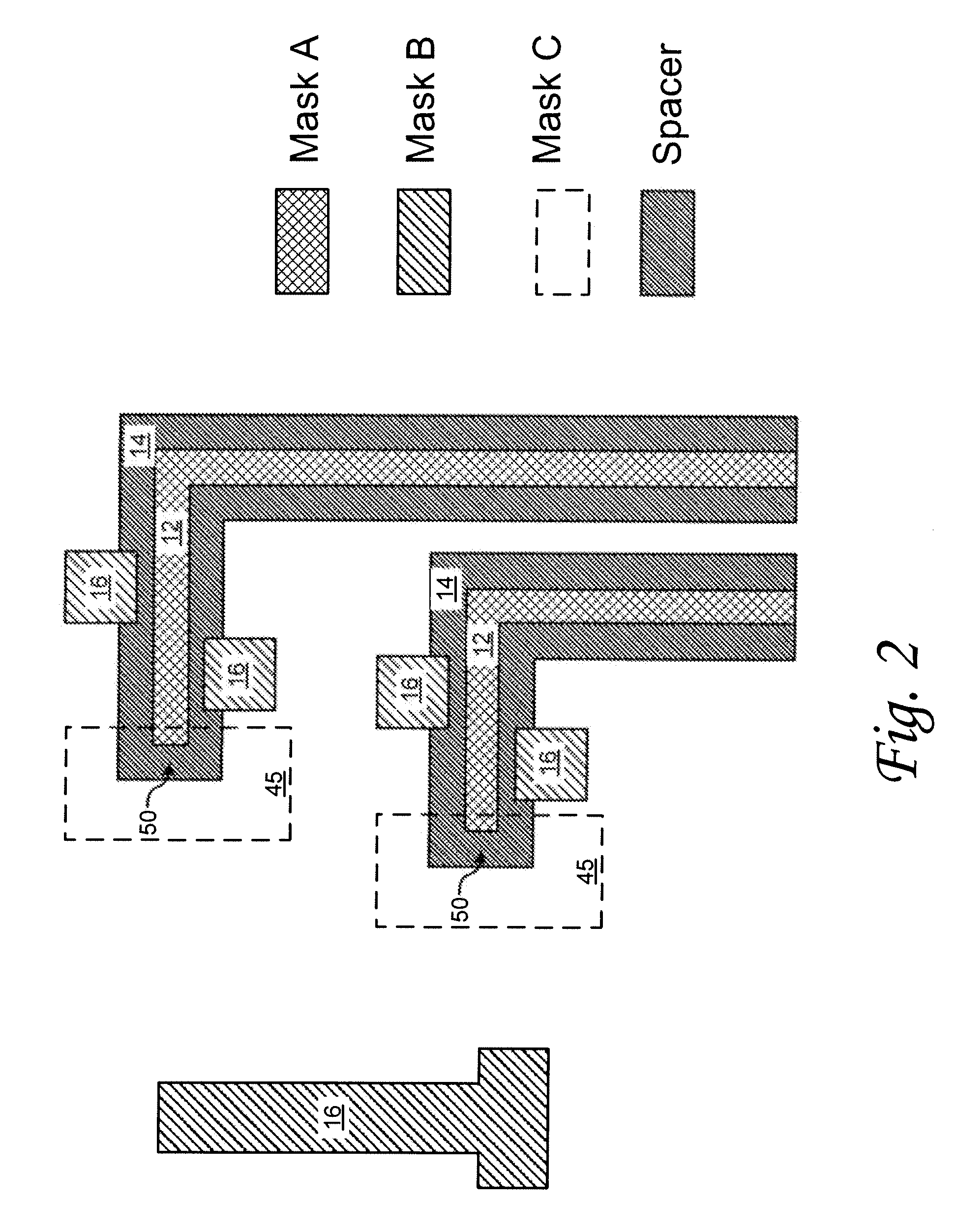Method of eliminating a lithography operation
a lithography operation and lithography technology, applied in the field of semiconductor device fabrication techniques, can solve the problems of increasing the resolution limit of conventional optical lithography technology, the inability to project an accurate image of increasingly smaller features onto the wafer, and the skyrocketing overall polygonal figure coun
- Summary
- Abstract
- Description
- Claims
- Application Information
AI Technical Summary
Benefits of technology
Problems solved by technology
Method used
Image
Examples
Embodiment Construction
[0014]According to various embodiments of the invention semiconductor devices and methods of manufacture are provided. In one embodiment, lines and components are provided on a layer of a semiconductor device, wherein the lines are of a first width and components, such as contact pads or other components, are of a second width. In accordance with one embodiment of the invention, the lines and contact pads are formed on a layer of the device without the need for an additional mask layer to form the contact pads. In another embodiment, other features in addition to or instead of contact pads can be added in the same mask layer.
[0015]According to an embodiment of the invention a method of semiconductor device fabrication includes processes of depositing a layer of a first material on a semiconductor substrate and patterning the layer to form a first pattern, wherein the first pattern defines wide and narrow space features; depositing spacer material over the first pattern on the substr...
PUM
 Login to View More
Login to View More Abstract
Description
Claims
Application Information
 Login to View More
Login to View More - R&D
- Intellectual Property
- Life Sciences
- Materials
- Tech Scout
- Unparalleled Data Quality
- Higher Quality Content
- 60% Fewer Hallucinations
Browse by: Latest US Patents, China's latest patents, Technical Efficacy Thesaurus, Application Domain, Technology Topic, Popular Technical Reports.
© 2025 PatSnap. All rights reserved.Legal|Privacy policy|Modern Slavery Act Transparency Statement|Sitemap|About US| Contact US: help@patsnap.com



